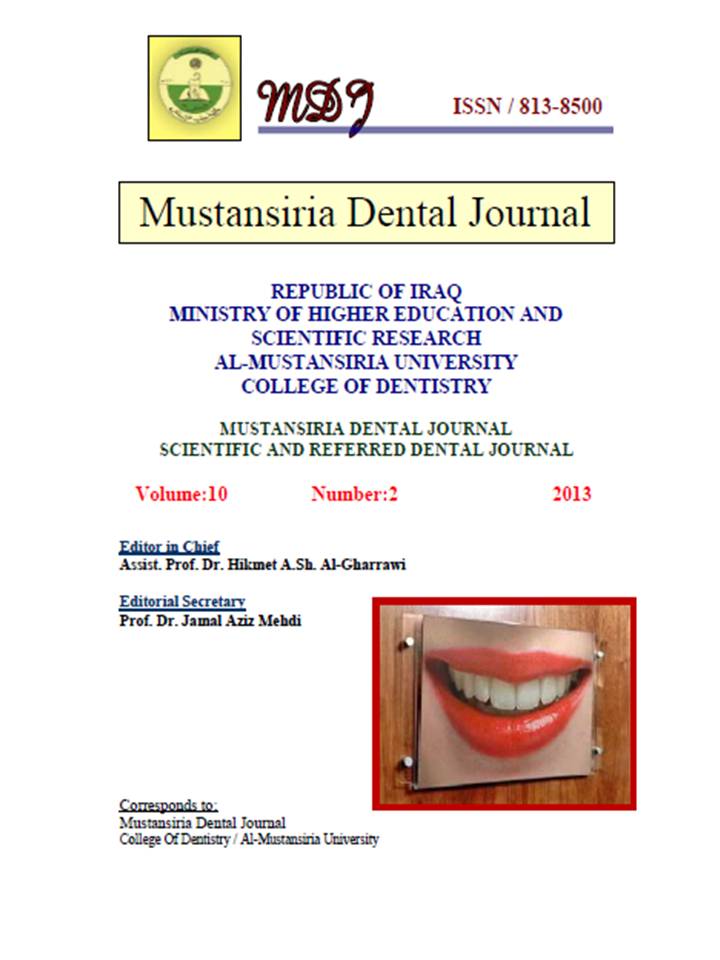Evaluation the effect of different instrumentation and obturation techniques on apical microleakage . (In vitro comparative study)
DOI:
https://doi.org/10.32828/mdj.v10i2.218Keywords:
Key word: Instrumentation,obturation,apical seal,apical microleakage.Abstract
This in vitro study evaluated and compared the apical sealing ability of two
obturation techniques and two type of instrumentation. A total of 120 teeth were
collected randomly divided into two groups 60 roots prepared using hand protaper,
other 60 roots prepared using rotary protaper .Each group was subdivided randomly
into two obturation groups of 30 roots for each; in group A- obtura II was used ,and
in group B-thermafill (TF) was used. Then the samples in all groups left for a week at
room temperature. After coronal sealing, all surfaces of the root covered with three
layer of nail polish except the apical 2mm, then each sample immersed in 10% black
Indian ink dye for 72 hours .After that the samples rinsed and nail polish removed
.then samples cleared & decalcified.Data had been collected from independent
examiners and statistically analyzed using student t-test. The stereomicroscopic
results showed that there was highly significant difference between hand and rotary
instrumentation, with in favor of rotary instrumentation technique. Concerning the
obturation techniques, Thermafill showed best apical sealing followed by Obtura II;
however, the differences were not significant.

Downloads
Published
Issue
Section
License
The Journal of Mustansiria Dental Journal is an open-access journal that all contents are free of charge. Articles of this journal are licensed under the terms of the Creative Commons Attribution International Public License CC-BY 4.0 (https://creativecommons.org/licenses/by/4.0/legalcode) that licensees are unrestrictly allowed to search, download, share, distribute, print, or link to the full texts of the articles, crawl them for indexing and reproduce any medium of the articles provided that they give the author(s) proper credits (citation). The journal allows the author(s) to retain the copyright of their published article.
Creative Commons-Attribution (BY)








